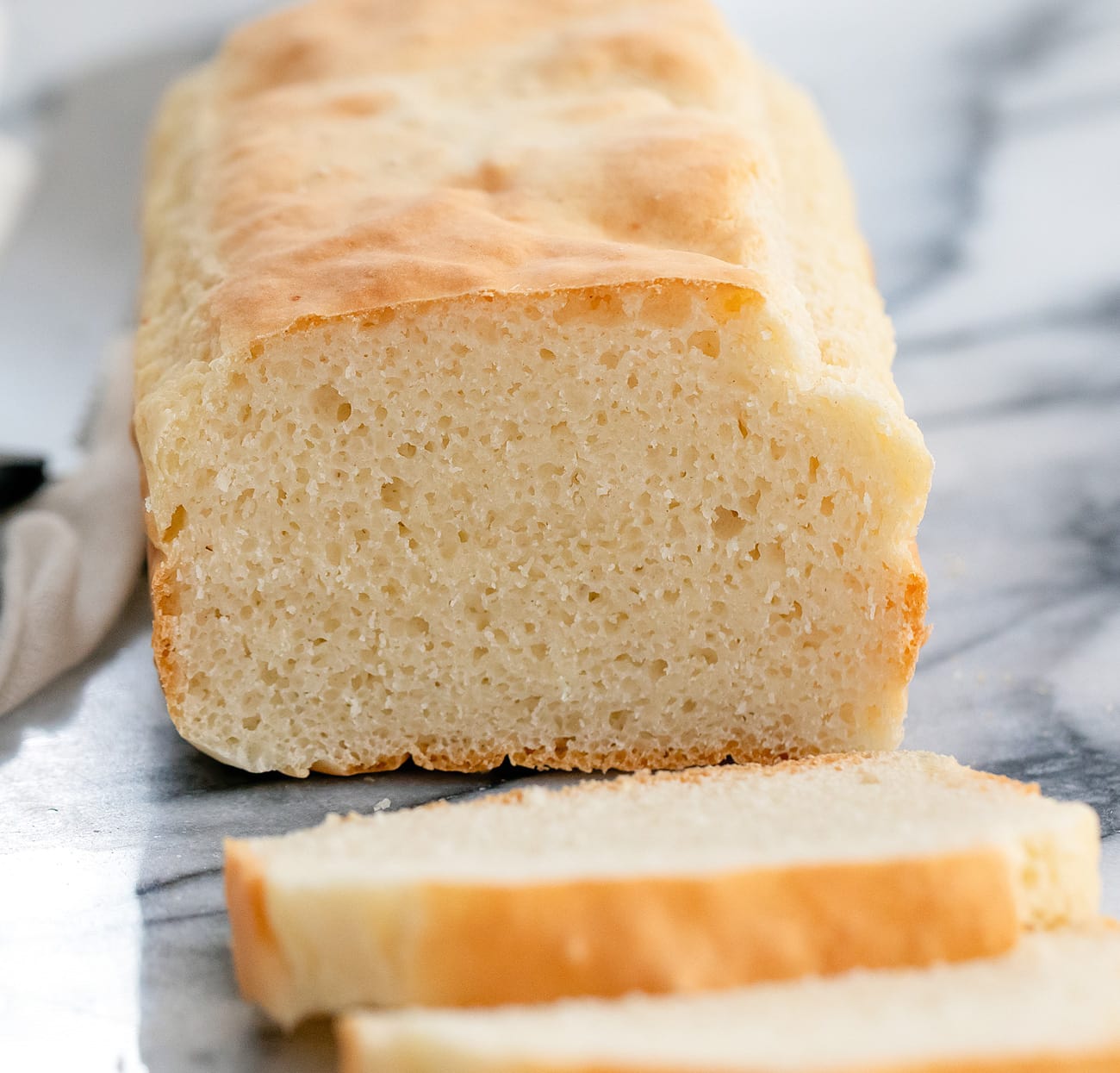The easiest Japanese milk bread recipe you could ever possibly hope for. No tangzong, no yudane, no overnight rise, just same-day, soft, and fluffy bread.
This is the bread I want to live in. I want to curl up in a squish bread sleeping bag and just day dream all day about toast and toast toppings. I’m pretty sure I’ve said this before, but opening a toast cafe would be my ultimate dream. In my toast cafe I would sell toast (of course) but I would also sell loaves and loaves of this fabulously fluffy bread.
There’s just something so comforting about milk bread, aka Japanese shokupan. Is its satisfying squishiness? The fact that it’s elevated to another level in Japan? Or is it just the fact that I love soft white bread and milk bread is the ultimate version? I may never know the answer and I’m okay with it because I am happy forever eating and searching for the perfect milk bread recipe.
I made this milk bread in what they call “mountain style” or “yama” 山 in Japanese. It’s because the rounded humps resemble mountain tops. If you’re interested in making square milk bread, check out my recipe here.
Milk bread dough is an enriched dough, which means it has dairy (milk, cream, and/or butter), eggs, oil, and/or sugar added to it. It is softer and richer than regular breads, which are made with primarily flour, water, salt, and yeast.

A note on size and shaping
I made this in a standard loaf pan (8.5 x 4.5 x 2.5 – this exact one) but I feel like my humps could have been even higher. Next time I will probably adjust so that I have a bit more dough to get a taller slice. Feel free to calculate your ideal total dough weight based on the bakers’ percentages below.
My best Japanese bread recipe
This particular recipe doesn’t have yudane or tangzhong, but is still incredibly soft and shreddable. Even days after the loaf was baked the slices were soft, squishy and moist. It’s the best loaf of milk bread that I’ve ever made, just the right amount of sweetness with a light, yet chewy, tight crumb.
- Milk. Milk bread wouldn’t be milk bread without milk. I like full fat milk so you can really taste the creaminess. If only I were still in Japan I would use Hokkaido milk to make a Hokkaido milk bread!
- Egg. A whole egg is used to make the milk bread extra rich. The yolk tenderizes and lightens up the crumb and because eggs are a leavener, you also get a very high loaf.
- Yeast. You can’t make bread without yeast! I use instant dry yeast which can be added straight to the flour and doesn’t need to be activated in warm water.
- Sugar. All milk loaves are bit sweet thanks to sugar.
- Butter. Butter adds extra richness.
- Flour. You’ll want to use bread flour because it has more protein than all purpose. The higher amounts of protein are what forms gluten, which gives this loaf it’s soft and shredable strands.
- Salt. Just a touch of salt for flavor.
How To Make A Super Soft Milk Bread Loaf | Easy To Make
FAQ
What makes milk bread different?
Why is milk bread so good?
What is the point of milk in bread?
Is milk bread different than white bread?
What is milk bread?
Milk bread is light, incredibly fluffy, and tears apart in melt-in-your-mouth strands. Milk bread dough is an enriched dough, which means it has dairy (milk, cream, and/or butter), eggs, oil, and/or sugar added to it. It is softer and richer than regular breads, which are made with primarily flour, water, salt, and yeast.
What are the health benefits of eating bread?
Bread contains health benefits if you consume it whole and without preservatives. Whole bread contains fiber, folic acid, many vitamins and proteins, has prebiotic effect, is low in fat and decreases the risk of cancer.
Why is milk bread so popular?
A sandwich staple from Japan, milk bread has been gaining recognition in the U.S. and with it, the fluffy bread’s demand has likewise soared. “We didn’t even think of putting whole loaves on the menu until we started getting a lot of requests,” pastry chef Yoshie Shirakawa of New York’s Pâtisserie Fouet told Bon Appétit in 2019.
What makes a good milk bread?
A good milk bread, the Japan Times says, is mochimochi — or similar to the softness, bounciness, and resilience of glutinous rice mochi balls. It is widely believed that the secret to making milk bread was adopted by Japanese bakers in the 20th century, based on a method that was used in China to bake soft, delicate, and sweet breads.
